Vehicles Used for Trolley Excursions | |
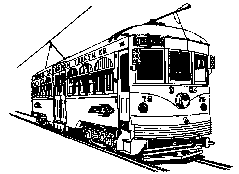 |
Philadelphia Suburban Transportation Co. #76 Car #76 (J.G. Brill Co., 1926) is a "Center Door" car originally built for the PSTC�s predecessor company, the Philadelphia and West Chester Traction Co. It was the highest-numbered car of a 32-car fleet of such cars bought in three orders, starting in 1919. These crowd-swallowing trolleys roamed the "Red Arrow Lines" system from 69th Street Terminal in Upper Darby to suburban terminals in West Chester, Ardmore, Media and Sharon Hill. As more modern cars arrived over the years, the remaining large, heavy Center Door cars were relegated to rush-hour "tripper" service, school trips, and winter operation to keep the lines clear of snow. Car #76 was retired in 1976, but runs today at the Electric City Trolley Museum. |
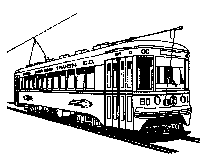 |
Philadelphia Suburban Transportation Co. #80 Car #80 was one of ten lightweight "Master Unit" style cars delivered by J.G. Brill to Philadelphia and West Chester Traction in 1932. These cars addressed mounting competition from the automobile by introducing sleek lines, contemporary automotive styling features and cushioned leather seats to the Red Arrow service. Car #80 endured in service until retired and sold in 1982 by the Southeastern Pennsylvania Transportation Authority (SEPTA). It has been returned to its early all-reddish-brown PSTC paint scheme and continues to operate at the Electric City museum. |
Vehicles on Display at Museum | |
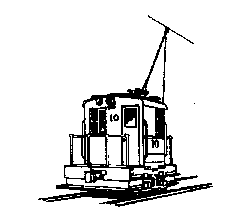 |
MacAndrews and Forbes Co. #10 General Electric built M&F #10 in the 1920s. The MacAndrews and Forbes Company was a licorice manufacturer in Camden, N.J., which operated an internal industrial railway electrified at 250 volts direct current (DC). Little four-wheeled locomotives like #10 worked at moving and distributing supplies and finished materials within the plant compound, and #10 survives today as an example of how electric railway technology was applied to industrial applications. |
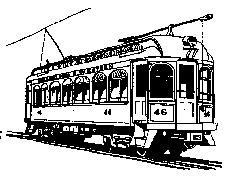 |
Philadelphia & Western Railway #46 Car #46 (St. Louis Car Co., 1907) remains as the sole surviving representative of the first generation of cars to run on the Philadelphia & Western Railway, a third-rail line built to high standards from 69th Street Terminal in Upper Darby, Pa. to Strafford, with a later branch to Norristown. Car #46 survived because the P&W converted it in 1928 into work car #446, with boxcar-like doors cut into its sides. It fell into disuse in later years and was retired in 1976. In preservation, its exterior appearance has been restored back to its original elegance, complete with arched leaded-glass windows. |
Reading Transit & Light Co. #102 Car #102 (J.G. Brill Co., 1918) represents a fleet of 21 similar "semi-convertible" trolleys ordered by the Reading, Pa. system in 1916 and 1918. These suburban cars were the final evolution of the classic side-of-the-road trolleys that served a connected network of trolley companies that once stretched from Philadelphia, Trenton and Wilmington westward past Carlisle. Car #102 operated on all three RT&L divisions � Lebanon, Norristown and Reading, traveling the rails from the Wissahickon section of Philadelphia all the way to Palmyra, Pa. Car #102 was retired in 1947, but its carbody was soon bought and conserved by Paul Rhoads and family. Honored as the first car to be rolled into the Electric City museum building, car #102 now sits on trolley trucks retrieved from Georgia and awaits its turn for full restoration. | |
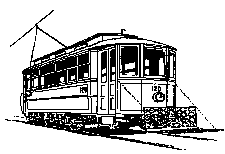 |
Delaware Electric Power Co. #120 Car #120 is an old single-truck (four-wheel) passenger car with a mysterious history. It survived as rail-grinding work car #W-58 in Philadelphia, first on the trolley system and later the Broad Street subway. Subsequent restoration work has revealed that it was car #120 of the Wilmington, Delaware trolley system, prior to its appearance in Philadelphia in 1929. It is believed to have been built around 1904 by either Jackson & Sharp of Wilmington or the Laclede Car Co. of St. Louis. As #W-58, the car was retired in 1971. It has been returned to its passenger car form. |
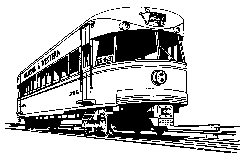 |
Philadelphia & Western Railway Co. #206 Car #206 (J.G. Brill Co., 1931) is one of the Philadelphia & Western�s famed "Bullet" cars, named for their pointed streamlined ends. These cars were offshoots of the C&LE high-speed cars of 1930, both developed under the management of Dr. Thomas Conway, Jr. in an attempt to rejuvenate the dying long-distance electric railway industry. Bullet car #206 continued to rocket along the P&W tracks under Red Arrow and later SEPTA management. It ultimately was converted into a "pickle car" to apply an anti-icing brine solution onto the line�s electrified third rail. Car #206 was retired in 1995. |
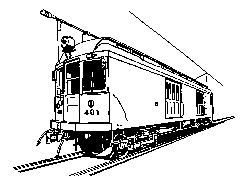 |
Philadelphia & Western Railway Co. #401 Car #401 (St. Louis Car Co., 1907) is a companion piece to P&W #46 in the museum collection. St. Louis Car built this work trolley at the same time as the P&W passenger car fleet represented by car #46. Car #401 had a long and productive career in work service, finally being retired by SEPTA in 1990. |
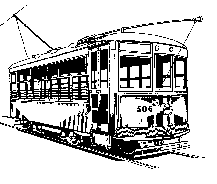 |
Reading Transit & Light Co. #506 RT&L #506 was one of a dozen "Birney" safety cars delivered by the Osgood-Bradley Car Co. in 1920 to the Reading-based trolley network. This short, lightweight car design was an attempt by the streetcar industry to reduce operating and maintenance costs to the minimum. Car #506 originally served on the Reading system�s Norristown Division, and was transferred to the "home" Reading division in 1925. It was retired in 1947. Stripped of salvageable metal components, the carbody was sold off and eventually was preserved by Paul Rhoads and family. The Electric City Trolley Museum has restored this streetcar, with a replica Osgood-Bradley truck, as its "Trolleys Exposed" exhibit. Specially cut-away sections reveal to curious visitors how trolleys were built and how they operated. |
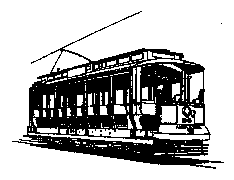 |
Third Avenue Railway #651, Five Mile Beach Electric Railway Co. #24 Car #651/#24 is the carbody of one of fifty Brill 12-bench open trolleys built in 1908 for the Third Avenue Railway Co. of New York City. Following its heyday in New York as #651, it was sold second-hand to Five Mile Beach of Wildwood, N.J., where it was renumbered #24 and ran in seasonal service until 1945. The carbody was retrieved years later and major restoration has been underway, including obtaining the last known "Eureka"-style maximum-traction trucks from Lisbon, Portugal. |
 |
Lehigh Valley Transit Co. #801 Car #801 (Jewett Car Co., 1912) is one of the famed "Liberty Bell Route" trolleys that ran between Allentown and Philadelphia. Twelve cars of this classic type, with separate baggage and passenger sections and arched "stained-glass" windows, were delivered from the Jewett factory in Newark, Ohio in two orders. Lightweight, high-speed cars replaced these large interurbans on LVT rails in 1939. Car #801 became a cottage carbody, while LVT converted other cars in the series into freight trolleys. The carbody of #801 has been preserved and thoroughly restored. It will be re-equipped with mechanical apparatus from sister car #808, which became freight trolley #C-15 and then outlived LVT as rubbish car #T-18 on Philadelphia�s Broad St. subway. |
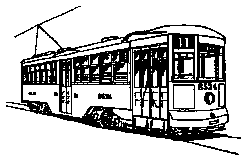 |
Philadelphia Rapid Transit Co. #8534 PRT #8534 was the last of 50 single-ended steel cars ordered in 1926 from Brill to supplement an order of 100 similar cars in 1924 and 385 similar cars in 1923, primarily due to anticipated extra riders generated by the Nation's 1926 Sesquicentennial Celebration in Philadelphia. The 1923 order was one of the largest orders ever placed with a car builder and in addition to the 385 single-ended cars, included 135 double-ended cars like #5205 and several types of utility cars. These cars replaced many older wooden "Pay-Within" and "Near-Side" cars on Philadelphia streets, but eventually slipped to second-place status behind PTC�s newer streamlined PCC car fleet. As buses increasingly replaced streetcars in the mid-1950s, this car class was phased out of service in 1957. Many of these cars were modernized, including #8534 in the 1940's. Car #8534 was partially returned to it's un-modernized 1920's appearance in the mid 1970's. For a number of years, #8534 still plied the streets of Philadelphia, under lease to SEPTA for charter tours. Because of operational and physical constraints along with financial/legal restrictions, SEPTA has determined that the Authority can no longer be charged with the liability connected with the presence of the trolley on Authority premises and #8534 has returned to the museum for display. Sister car #8042, which represents the 1941 modernized version of this fleet, has been transferred from the Electric City collection to the Pennsylvania Trolley Museum in Washington, Penna. where a single-ended wide gauge car can be operated. |
Vehicles on Display at Trolley Works Restoration Shop at Montage | |
 |
Scranton Railway Co. #324 The Scranton Railway Co. ordered 10 wooden deck-roof streetcars, including #324, from J.G. Brill Co. in 1903. The railway company started modifying cars in this group to Pay-As-You-Enter-style configuration, beginning in 1916. At a later date, it modernized and simplified a number of these cars, rebuilding them with a plain arch roof and flat steel side sheathing. Despite this renovation, newer car types rendered car #324 surplus by 1941. It was stripped of components and sold off. It then served as a diner in nearby Gouldsboro, Covington Township, eventually being built into a larger restaurant building. The Electric City museum acquired and retrieved the carbody in March 2000 for eventual restoration. Car 324 is one of two Lackawanna County and northeast Pennsylvania trolley in the museum�s collection . |
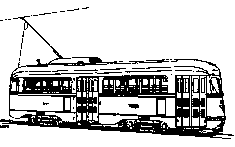 |
Philadelphia Transportation Co. #2054 Car #2054 (St. Louis Car Co., 1940) is an "air-electric" PCC car. It spent its entire service life in Philadelphia, and in 1980 was selected by SEPTA to be painted in the original Philadelphia PCC paint scheme of silver, cream and blue accents to represent it's 40th anniversary of service. PCC cars, like #2054, and the later "all- electric" types represent nearly half the timespan of Philadelphia's electric trolley service, between the days of horse or cable cars and today's modern light rail vehicles. |
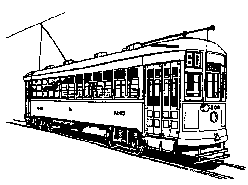 |
Philadelphia Transportation Co. #5205 Car #5205 (J.G. Brill Co., 1923) was #5287 when bought by the Philadelphia Rapid Transit Co. as part of a huge order to modernize its 2,500-car passenger and work fleet. The car had its number changed in 1926. While most Philadelphia streetcars were single-ended, the 5200-series is double-ended, the last such Philadelphia cars. In 1941 PTC modernized car #5205 with upgraded mechanical parts, padded leather on the seats, and a repainting from orange and cream-yellow to green and cream-yellow. The car escaped the scrapman�s cutting torch in 1957 and is now undergoing refurbishment in Electric City�s restoration shop. |
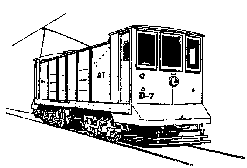 |
Philadelphia Rapid Transit Co. #D7 Car #D-7 was built by PRT�s own 8th Street shops in 1908 as #2624, being renumbered in 1912. It was an unusual "coal trolley," resembling a railroad hopper car with end platforms and a pole added. The car dutifully hauled coal to power stations where PRT generated its own electricity. PRT gradually bought more and more power rather that generating its own, and it closed its power stations slowly between 1913 and 1925. Car #D-7 was then converted into a vacuum cleaner car for the streetcar Subway-Surface tunnel. It was sold off in 1971 and is the only coal trolley preserved today. |
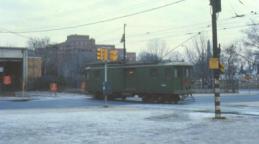 |
Philadelphia Rapid Transit Co. #D-37 PRT built car #D-37 in 1922 as a line car, designed to help maintain the overhead power wires where wire wagons (and later wire trucks) could not reach, particularly in Philadelphia�s streetcar Subway-Surface tunnel. The car features room for storage of materials inside, an adjustable platform below a hatch in the roof for lower-level work, and a roof-mounted platform for higher-level line maintenance. |
Vehicles not Currently on Display | |
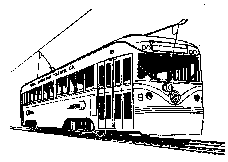 |
Philadelphia Suburban Transportation Co. #9 Car #9 is one of the last ten cars built by the J.G. Brill Company of Philadelphia, the largest trolley builder in the world. These are high-speed, suburban variations of Brill�s "Brilliner" design, delivered to the Red Arrow system in 1941. The Brilliner was a last-ditch attempt by Brill to match the PCC car, a design collaboratively developed by other industry suppliers and major transit systems to redefine the streetcar in the face of overwhelming automotive competition. Car #7 was the last traditional streetcar to run in Red Arrow�s suburban service, prior to the conversion to modern "light rail vehicles" in 1982. Brilliner #10 was destroyed in a wreck in 1963, making museum car #9 the "newest" Brill trolley still in existence. In 2009, the carbody of #7, which was also in the museum collection, was found to be severely deteriorated. It has been deacessioned and disposed of. However, the mechanical and electrical equipment has been saved to facilitate the eventual return to operation of #9. |
 |
Philadelphia and Western Railway Co. #164 The Philadelphia and Western Railway Co. ordered 164 as part of an 11 car purchase from J.G. Brill Co. between 1924 and 1929. Within a few years of its purchase the car was substantially rebuilt, modernized and simplified. In 1986, 164 was converted to work car service and used as a "Pickle" car to de-ice the third rail with a salt brine solution. It was retired and sold by Southeastern Pennsylvania Transportation Authority (SEPTA) in 1992 to a tourist railroad, which in turn sold it again to the East Troy Museum in Wisconsin. The Electric City Museum acquired the car in November 2009 from the East Troy group, and moved it to Scranton for eventual restoration and service. |
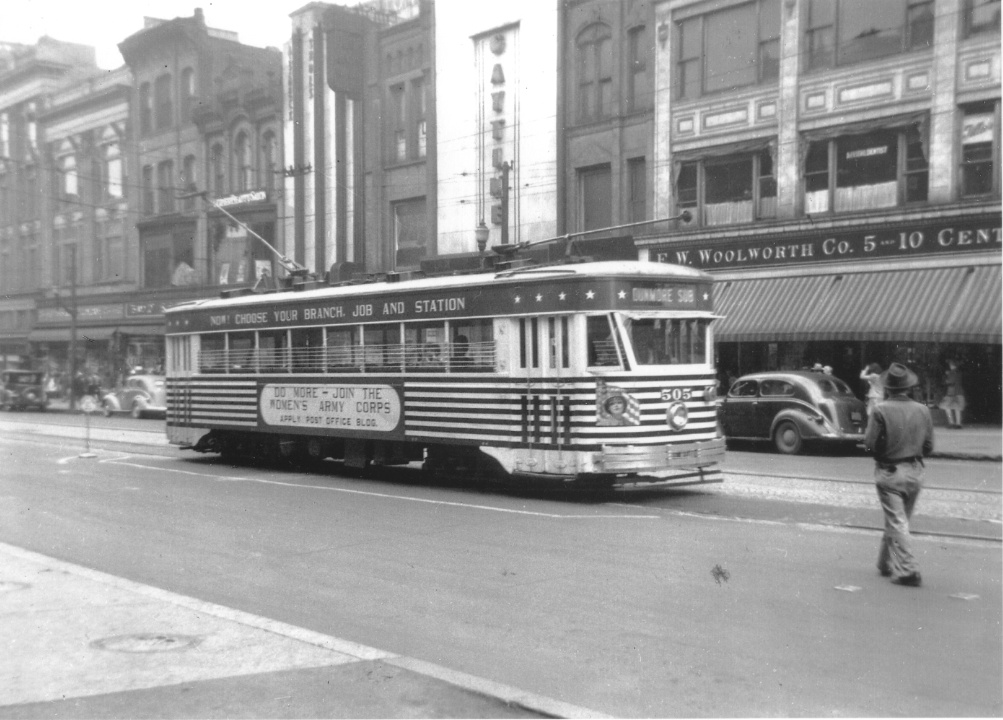 |
Scranton Transit #505 Scranton Transit ordered 10 cars, including #505, from Osgood Bradley of Worcester, Mass. in 1929 as part of a group order with New Bedford, Mass. and Altoona, Penna. These cars, of modern design, were referred to by the builder as "Electromobiles". These cars served as the backbone of the fleet during the last years that trolleys operated in Scranton. #505 was originally saved by a museum in New York State and then aquired by the Magee Transportation Museum in Bloomsburg, Penna. With a trade of railway car trucks and motors, the Electric City museum aquired #505 from Railways To Yesterday in Rockhill Furnace, Penna. However, because of outside storage over the years and the lightweight construction, the car body is badly deteriorated and what we have is basically a "kit" of parts to be totally rebuilt/reconstructed. We do have the significant parts such as motors, trucks, seats and interior and exterior fittings. Along with car #324, car #505 is one of two Lackawanna County and northeast Pennsylvania trolley in the museum�s collection. In 2007 a set of detailed builder's drawings of these cars was obtained from the Pullman Collection at the Illinois Railway Museum and in 2009 the parts from Queensborough Bridge Railway #601, originally one of the New Bedford cars, were obtained from the Trolley Museum of New York to also aid in the rebuilding of #505. Project 505 is joint effort by the Electric City Trolley Museum Association and several Greater Scranton Civic leaders to bring back a part of Scranton's transit history. Please click the car number above for more information. |
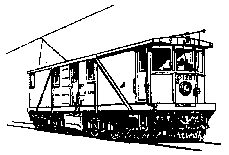 |
Philadelphia Rapid Transit Co. #C-128 When Philadelphia Rapid Transit made its big car purchase from Brill in 1923, #C-128 was the highest-numbered of ten double-truck snow sweeper trolleys included. Streetcar company franchises often required the companies to clear the streets of snow. Large rotating brooms of bamboo shoots would sweep snow from the track, while a side-mounted plow blade cleared the adjacent roadway lane. The 1923 PRT sweepers used recycled motors, controllers and other parts from retired streetcars. SEPTA disposed of these snow sweepers in 1974. |
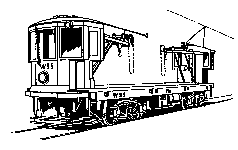 |
Philadelphia Rapid Transit Co. #W-55 Car #W-55 was one of twenty "roadway department" cars built by the J.G. Brill Company as part of PRT�s large 1923 order. In this group were six motorized flat car trolleys with a wood operating cab at each end, a jib crane, and drop sides. In 1926, four of these cars, including #W-55, were rebuilt with two jib cranes. The lower portions of their cabs were narrowed so that long, overhanging rails could be carried on the outer edges of the cars� flat decks. |